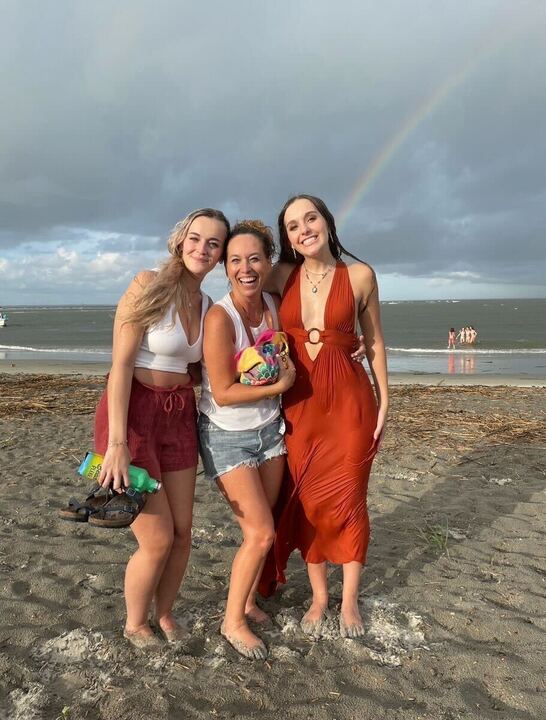What to Do When Things Go Wrong As A Photographer
Let’s face it – no matter how seasoned you are behind the lens, photography mishaps are bound to happen. But fear not! Today, we’re diving into a topic that every photographer encounters at some point: What to Do When Things Go Wrong.
From unpredictable weather to challenging lighting situations, last-minute cancellations, and dealing with unhappy clients, we’ve all been there. In this episode, I’ll share some valuable tips and strategies to help you navigate these tricky situations like a pro.
Let’s get started!
Tip #1: Embrace the Elements
How and When To Reschedule When Things Go Wrong
Alright, first up, let’s talk about what to do when things go wrong due to unexpected weather conditions. Always have a backup plan for outdoor shoots!
If there is rain in the forecast, how do you know when it’s time to reschedule or move forward?? For me, I always tell my clients that I will contact them the day of the photoshoot regarding the weather! I tell them not to stress. I will be watching the weather and will give them my best advice for either moving forward with the photo shoot or rescheduling.
My rule of thumb is: if it is a 50% chance of rain or more, it’s most likely going to be rescheduled. That way my clients get the best possible outcome for their photos.
I also look at the wind. I will reschedule if it is above 20 miles per hour. Because honestly, who wants to sit through hair and makeup only to get their hair blown all over the place in their photos?
I also tell them that extreme cloudiness may require us to reschedule. Now could I take photos in extreme cloudiness? Of course. Ultimately I want my clients to have the best experience possible. A dreary cloudy day is not something that makes for the best experience possible. It could be cool if that is a look you are going for. Or if you live in an area where it’s more common than not to have cloudy days, your rescheduling policy may differ from mine. Ultimately as photographers, we have to make sure we clearly communicate our suggestions for our clients and weather-related reschedules.
If the weather turns gnarly with lightning or crazy winds, reschedule that shoot for another day. I was once on a photoshoot with a senior client and it was beautiful and sunny and then out of nowhere, a huge storm showed up! We waited it out for a few minutes to see if it went away as quickly as it appeared. However, I had to call the photoshoot and reschedule the rest for another day!
It’s always a bummer to have to reschedule. However, if I have the flexibility to reschedule, I know that is what is best for my client.
What To Do When Rain Shows Up
Now if a reschedule is not possible, you should have a backup plan for rain. For instance, look for places such as a parking garage, overhangs on buildings, indoor spots with beautiful natural light or you may have a studio that you can use if weather doesn’t permit you to take photos outside.
In all my years hosting workshops and retreats, I stress about the weather affecting our styled photoshoots. Of course, stressing about it doesn’t change it but having a backup plan is so important! I have had to think on the fly and find an indoor spot due to rain! We used a parking garage and the public transportation entrance because it was covered to avoid the rain and got some really cool shots!
If rain shows up uninvited, don’t stress! Embracing the elements creatively can turn challenges into opportunities for unique and memorable photos. If rain disrupts your outdoor shoot, integrate umbrellas, rain boots, or colorful raincoats as props. Have these props on hand so you are always prepared. These things not only add a playful and whimsical element to your images but also showcase your adaptability and creativity as a photographer.
Here are some photos from a recent shoot where it started raining in the mid-shoot!
Encourage your seniors to embrace the weather and have fun with the unexpected elements. This results in authentic and candid moments captured on camera. Turn that unexpected downpour into a photo op that’ll be fun and memorable!
Communicate clearly with your clients about the importance of safety precautions and the need for flexibility in scheduling to ensure a successful and enjoyable photo session for everyone involved. By embracing the elements with preparedness, creativity, and safety measures, you can navigate outdoor shoots smoothly and deliver stunning results regardless of the weather challenges.
Tip #2: Mastering Lighting Challenges
Next, take a good look at your lighting situation before you start clicking away. Sometimes clients ask us to photograph in a specific location that you may not always have time to scout beforehand. And even though the client may say, “It has great light!” that may not always be the case. Clients don’t know what we know when it comes to lighting and photography.
Take the time to look at lighting, especially in new locations. Note any potential challenges such as harsh shadows, uneven lighting, or overly bright spots that could affect the overall quality of your photographs. Adjust your shooting angle or position your subject strategically to mitigate these issues and create a more visually appealing composition.
Best Tools For Lighting Challenges
Reflectors and diffusers are your BFFs when it comes to taming harsh light or jazzing up those indoor shots with a little extra glow. Reflectors can bounce natural light onto your subject, filling in shadows and creating a more balanced illumination. Similarly, diffusers can soften harsh sunlight or artificial light sources, resulting in a more flattering and even lighting setup. Experiment with different reflector sizes and colors to achieve the desired effect based on your shooting conditions and creative vision.
For indoor shoots or locations with limited natural light, invest in portable lighting equipment. Game changers are speed lights or continuous LED lights. These tools provide additional control over the lighting environment, allowing you to enhance or modify the existing light to suit your photographic style.
Use speed lights to add fill light or create dramatic effects. LED lights offer consistent and adjustable illumination for portrait sessions or studio setups.
By mastering lighting challenges through careful assessment, strategic positioning, and the use of supplemental tools, you can elevate the quality of your photographs even in challenging lighting conditions. Flexibility, experimentation, and a solid understanding of lighting principles will enable you to adapt and thrive in various shooting environments, ensuring stunning and impactful images for your senior photography clients.
TIP #3: Handling Last-Minute Cancellations
Now, onto the dreaded last-minute cancellations. We’ve all been there, right? First things first, keep calm and communicate with empathy and understanding.
Understand where your client’s coming from and see if there’s any way to work things out.
Take the time to listen to their reasons for canceling, whether it’s due to unforeseen circumstances, personal emergencies, sickness or scheduling conflicts. Express empathy. Offer to reschedule the session if feasible, showing that you prioritize their needs and value their business.
Outline Your Cancellation Policy In Your Contract
Having a clear and comprehensive cancellation policy outlined in your contract is essential for managing such situations effectively. (Get started with templates from The Legal Paige!) Clearly state the terms and conditions regarding cancellations, rescheduling, and refunds or cancellation fees to avoid misunderstandings and ensure transparency for both parties. This not only protects your business but also sets clear expectations for your clients regarding the consequences of last-minute cancellations.
And hey, if you find yourself with some unexpected free time, use it wisely! Update your portfolio, amp up your marketing game, or slide into those DMs and connect with some potential clients.
Use that unexpected free time productively to benefit your business. Instead of dwelling on the cancellation, use the extra time to work on essential tasks that contribute to your professional growth. This could involve updating your website or portfolio with new work, refining your marketing strategies, networking with potential clients or collaborators, or even investing in self-improvement through online courses or workshops.
By turning setbacks into opportunities for productivity and development, you can transform a last-minute cancellation into a chance to enhance your business and build stronger client relationships.
TIP #4: Managing Unhappy Clients
Last but not least, let’s chat about what to do when things go wrong due to unhappy clients. We never want this to happen, but it inevitably will happen in your career.
Active listening is key here. Acknowledge your client’s concerns and feelings. Show empathy and understanding, even if you don’t necessarily agree with their perspective. And try really, really hard not to take it personally!! I know it is super hard but most of the time it is NOT personal.
Take responsibility for any slip-ups or misunderstandings and work together to find a solution that leaves everyone smiling. Whether it’s offering a complimentary reshoot, providing additional editing, or offering a partial refund, aim to find a resolution that satisfies your client.
How I Handled An Unhappy Client
I remember one particular client who was not happy with her photos. The key to making her happy was talking to her and really trying to pinpoint what it was that she didn’t like.
I had photographed both her older sisters on days that were sunnier than her photoshoot, so it was the lighting and the brightness she was missing in her photos. Her shoot day was extremely overcast. Even though we were in the same field, it takes on a very green cast when the sun is not shining. It’s a location that really needs that yellowness from the sun to cut through all the green and to make other colors pop. That was what she was missing. That was not necessarily my fault. Once I got to the bottom of what the real issue was, I could reshoot on a day that would give her the look she was going for.
Learn from the experience. Use feedback from unhappy clients as an opportunity to learn, level up, and improve your skills as a photographer. Take note of any areas where you can enhance your services to prevent similar issues in the future.
Solutions For What To Do When Things Go Wrong As A Photographer
And there you have it – “What to Do When Things Go Wrong” – we covered weather, lighting, last-minute cancellations, and unhappy clients! Remember, no matter what challenges you may face, stay flexible, stay positive, and keep creating amazing memories for your clients.
The post What to Do When Things Go Wrong As A Photographer appeared first on Seniorologie.



